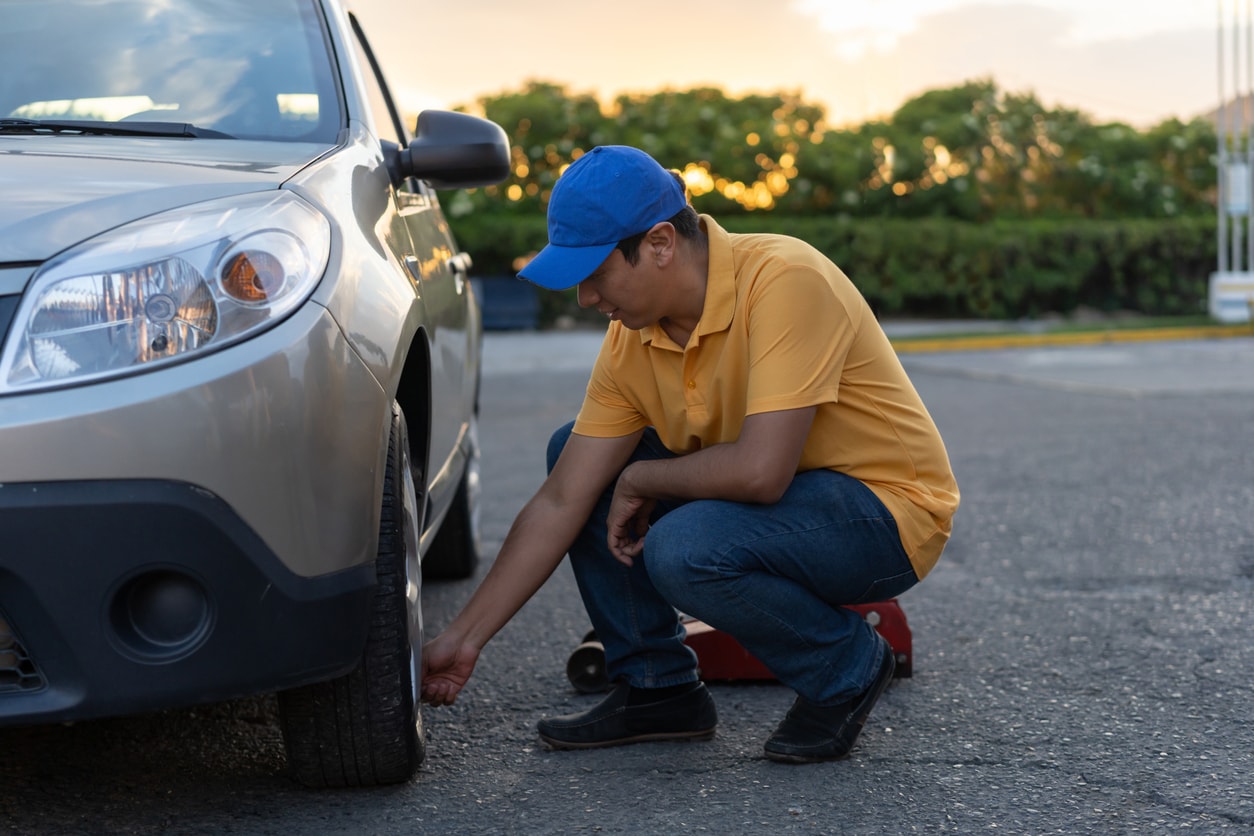You're not imagining things — your tire pressure is shifting with the weather. As seasons change and temperatures fluctuate, you'll likely experience varying levels of PSI. If you’re not careful, this can lead to overinflation or underinflation of your tires. Combat inconvenient repair costs by learning how weather affects your tires and what you can do to keep them in excellent working condition.
Why Is Tire Pressure Important?
If tire pressure is too low or too high, your tire performance may become compromised — increasing the likelihood of various safety concerns. PSI imbalance can also lead to premature wear, high replacement costs, and poor fuel efficiency.
To combat these issues, it's important to learn how to check your PSI to help maintain proper tire pressure levels. This way, you can spot potential issues before they create more significant problems.
Why Does Tire Pressure Change?
When air molecules experience cold temperatures, they move slowly and stick closer together — taking up less physical space. In warmer temperatures, air molecules move quickly and spread out more — taking up more physical space.
When the air molecules inside your tires heat up, they expand, often leading to increased tire pressure.
As you might expect, the opposite is true for cold air. If the temperature outside drops suddenly (like it does overnight in the fall and spring seasons), the air in your tires can become condensed, leading to a loss of pressure.
The relationship between PSI shifts as temperature changes:
- Higher temperatures = higher pressure and overinflation
- Lower temperatures = lower pressure and underinflation
Staying Ahead of the Tire Pressure-Temperature Relationship in Winter
During the colder months of winter, you may suspect that your tires are low on air in the early mornings. Often, the heat of driving on the road is enough to expand the air and restore proper pressure levels. But sometimes, you need to take further action to keep your tires rolling efficiently.
Here are tire pressure symptoms to look for in winter:
- Is your TPMS light on? If it goes off within a few minutes of driving, you’ve likely reached a safe tire pressure. If it stays on throughout your trip, the roadway friction alone may not be enough to increase your tire pressure efficiently (in which case you should add air to your tires). Alternatively, it could signify a leak or puncture.
- Are your tires visibly flattened? If your tires look deflated, they probably are. Pull into your nearest Tires Plus for a tire pressure check, tire repairs, and more.
- Do you notice increased road noise? Low tire pressure can change how your car’s weight sits on top of the tires, leading to increased drag and louder road noise.
So, how do you combat tire pressure loss due to temperature? If you see any of these symptoms during winter, try adding more air to your tires. If these issues persist, you could have a leak in one or more of your tires. It’s a good idea to have your tires inspected and repaired by a pro in those cases.
Does Tire Pressure Increase with Heat?
Tire pressure variation with temperature changes can always pose a safety threat on the road, but the danger of a tire blowout can increase during the hottest days of summer. If your tires are overinflated due to heat, adding the normal friction of rolling along the road, and navigating rough terrains, can even lead to one of your tires bursting, in extreme cases.
Here are a few signs of overinflated tires in summer:
- Your treads are wearing unevenly. If the center of your tires’ tread is wearing faster than the edges, there’s a good chance that they are over inflated.
- Your TPMS comes on after you’ve been driving for 15-20 minutes. If your tire pressure is too high before you drive your vehicle, it can only increase with friction from the road. If your TPMS light illuminates while your car is in operation, you’ll need to check your tire pressure as soon as possible.
When your tire pressure rises when the temperature increases (and remains too high), you simply need to let some of the air out of your tires. To do so, remove the valve stem cap from the affected tire, then use a small tool to press down on the pin inside the valve and release air.
Do this incrementally, and be sure to stop and check your tire PSI pressure each time you depress the pin to ensure you don’t let out too much air. Replace the valve stem cap, and continue to monitor your tires with visual checks on hot days.
Tire Pressure Variation with Temperature: Be Proactive
Driving with properly inflated tires is essential to keeping your vehicle running smoothly. Help keep yourself and your passengers safe by closely monitoring tire pressure variations with temperature changes. Not sure if your tires can take the heat? Trust the pros at your nearest Tires Plus for all your tire needs.



